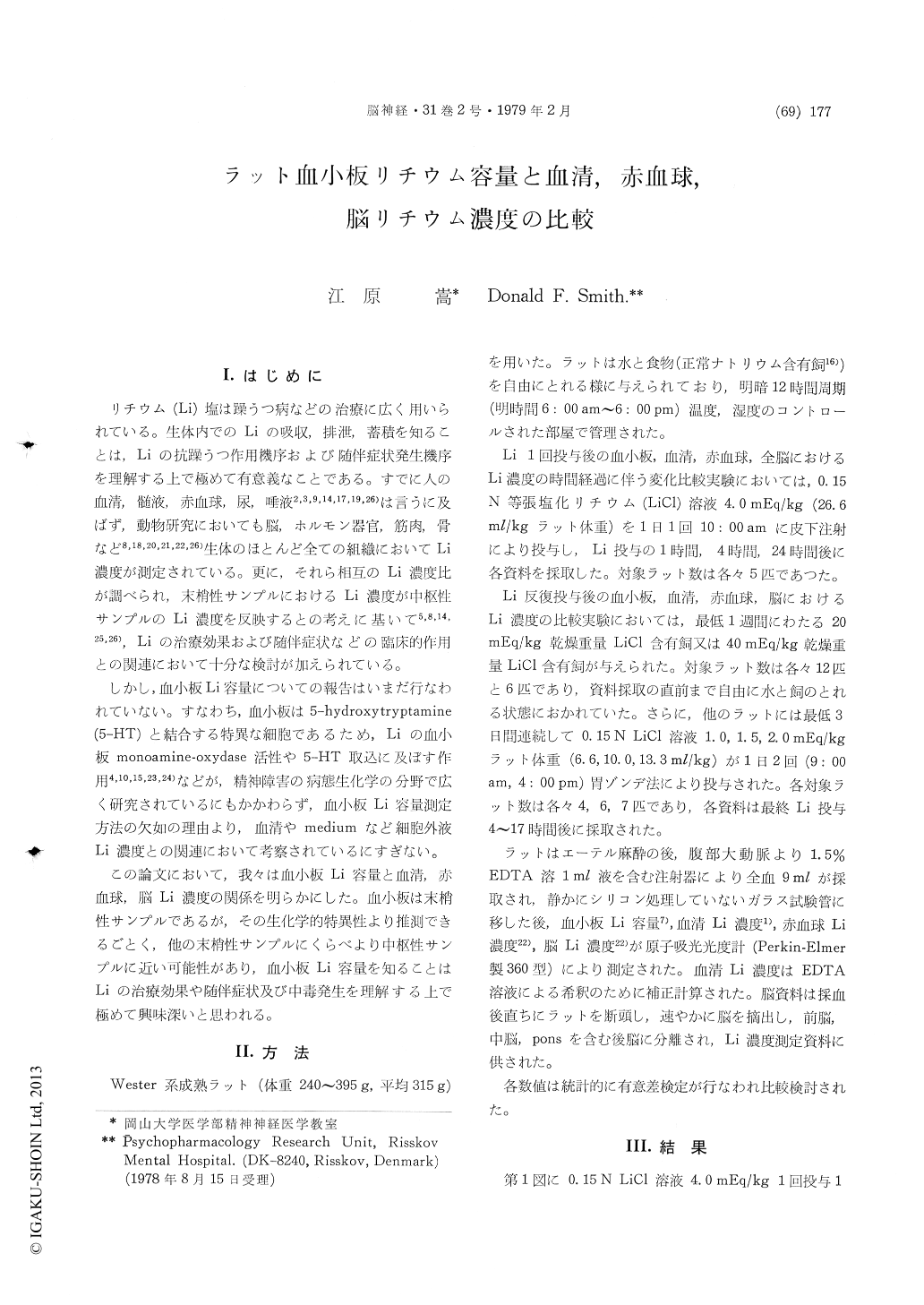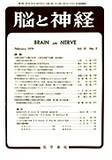Japanese
English
- 有料閲覧
- Abstract 文献概要
- 1ページ目 Look Inside
I.はじめに
リチウム(Li)塩は躁うつ病などの治療に広く用いられている。生体内でのLiの吸収,排泄,蓄積を知ることは,Liの抗躁うつ作用機序および随伴症状発生機序を理解する上で極めて有意義なことである。すでに人の血清,髄液,赤血球,尿,唾液2,3,9,14,17,19,26)は言うに及ばず,動物研究においても脳,ホルモン器官,筋肉,骨など8,18,20,21,22,26)生体のほとんど全ての組織においてLi濃度が測定されている。更に,それら相互のLi濃度比が調べられ,末梢性サンプルにおけるLi濃度が中枢性サンプルのLi濃度を反映するとの考えに基いて5,8,14,25,26),Liの治療効果および随伴症状などの臨床的作用との関連において十分な検討が加えられている。
しかし,血小板Li容量についての報告はいまだ行なわれていない。すなわち,血小板は5—hydroxytryptamine(5—HT)と結合する特異な細胞であるため,Liの血小板monoamine-oxydase活性や5—HT取込に及ぼす作用4,10,15,23,24)などが,精神障害の病態生化学の分野で広く研究されているにもかかわらず,血小板Li容量測定方法の欠如の理由より,血清やmediumなど細胞外液Li濃度との関連において考察されているにすぎない。
Previous studies on blood platelet have provided information about the biological pathogenesis of manic-depressive illness and the mode of action of Lithium (Li) ; because blood platelets are binding with 5-hydroxytryptamine which changes may oc-cure manic-depressive illness. A shortcoming of the studies on blood platelets has been, however, that the effects of Li were related only to the ex-tracellular concentration of Li rather than to the amount of Li in platelets. The present studies were carried out to compare the Li content in blood platelets with the Li concentration in serum, red blood cells (RBC) and brain regions in rats.
In acute studies, the time couse of changes in the Li content in blood platelets resembled the changes in the serum Li concentration more than the changes in the Li concentration in RBC and whole brain 1, 4, and 24 hr after a subcutaneous in-jection of isotonic LiCI (4.0 mEq/kg) solution. The highest levels of Li in platelets and serum occured at 1 hr, while the highest levels of Li in RBC and whole brain occurred at 4 hr and 24 hr, respectively.
In chronic studies, the Li content in blood plate-lets, serum, RBC, forebrain, midbrain and hindbrain in rats given either LiCl in their food (20 or 40 mEq/kg dry weight) for at least one week or an isotonic LiCl solution (1.0, 1.5 or 2.0 mEq/kg rat weight) twice a day by stomach load for at least 3 days were compared. The coefficient of correla-tion between the Li content in blood platelets and serum, RBC or brain regions ranged from 0.81 to 0.86 and were significantly lower than the coeffi-cient of correlation between the Li concentration in serum, RBC and brain regions which rangied from 0.88 to 0.98. The levels of Li in blood platelets was significantly more variable than the Li levels measured in the other samples in con-formity with a comparision of each variability (S. D./mean ratio). The cause of the relatively high variability of the platelets Li content is uncertain. It may have been due to amalytical errors. How-ever, different transport mechanism for Li in bloodplatelets should be considered, so studies to characterize the kinetics of Li transport in blood platelets are need.
The present findings suggest, nevertheless, that the concentration of Li in the serum may fail to porvide a reliable estimate of the amount of Li inblood platelets.
Futher studies may relate the levels of Li in platlets to effects of Li on affective disorders or on mechanism of side effects.

Copyright © 1979, Igaku-Shoin Ltd. All rights reserved.


